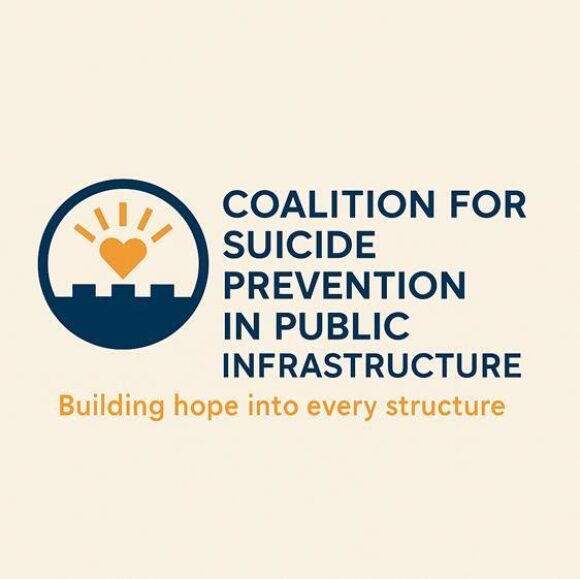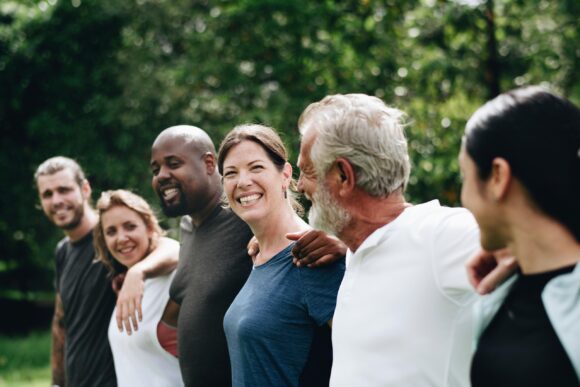The Coalition for Suicide Prevention in Public Infrastructure (CSPPI)
This Is Preventable. This Is Fixable. This Is Urgent.
Who We Are
The Coalition for Suicide Prevention in Public Infrastructure (CSPPI) is a national coalition led by suicide loss survivors and family members who have experienced the pain of losing a loved one to suicide from a tall public structure. We’ve turned our grief into action, working to ensure that suicide prevention is prioritized and integrated into national infrastructure.

We will be joined by public and private sector partners who share our commitment to structural safety, suicide prevention, and improving public safety in the built environment.
Founded by M.J. Weiss Blair and Trish Merelo—who each lost a child to suicide from a tall public structure in Minnesota and Tennessee—this coalition began with their efforts to require suicide prevention barriers in their own communities. Their grief became a catalyst for action, and their advocacy has now fueled a national movement.
The Issue
Suicide is a top public health crisis. Tall bridges, overpasses, and buildings are frequently used in impulsive suicide attempts. These structures can be made safer – we know that barriers work. More than 90% of people prevented at a high-risk location do not go on to die by suicide elsewhere.
The Opportunity
The U.S. invests over $400 billion in infrastructure annually. According to a 2024 CDC study published in Injury Prevention (Peterson et al., 2024), the economic cost of suicide and nonfatal self-harm averages $510 billion (2020 USD) annually—most of it from life years lost to suicide.
- Working-aged adults (25–64 years) make up nearly 75% of the $484 billion annual cost of suicide ($356B)
- Youth and young adults (10–44 years) account for nearly 75% of the $26B cost of nonfatal self-harm ($19B)
Source: Congressional Budget Office (2022): https://www.cbo.gov/publication/58124
These figures highlight that suicide prevention is not only a public health imperative, but an economic one.
Barriers Work
Real-world examples from across the U.S. and abroad confirm it:
- Clifton Suspension Bridge (UK): Local suicide rates fell dramatically post-barrier. Source: https://www.researchgate.net/publication/6387734_The_effect_of_barrier_installation_on_the_Freedom_Bridge_on_suicide_rates_in_Bristol_United_Kingdom
- Golden Gate Bridge: Net barrier installation = steep drop in suicide attempts. Source: https://bridgerailfoundation.org/news/suicide-barrier-project-at-golden-gate-bridge
- Cornell University: Permanent nets = zero suicides at bridge sites since. Source: https://news.cornell.edu/stories/2011/04/experts-bridge-barriers-help-prevent-suicides
- Natchez Trace Bridge (TN): Temporary fencing curbed further loss. Source: https://wpln.org/post/natchez-trace-bridge-will-soon-have-temporary-fencing-to-prevent-suicides
- Sunshine Skyway Bridge (FL): Tall barriers led to significant drop in suicides. Source: https://www.baynews9.com/fl/tampa/news/2021/05/05/sunshine-skyway-suicide-barrier-construction-complete
Our Vision
Every new or reconstructed public structure identified as high-risk should include suicide prevention features. That means:
- Federal legislation like the Barriers to Suicide Act (Beyer–Fitzpatrick, May 2025) (H.R. 3505 Text), which creates a national grant program for suicide prevention barriers and deterrents on bridges, buildings, parking garages, highway-rail grade crossings, and rail stations—any structure legally defined as a high-risk public location.
- A mandated federal study to evaluate barrier effectiveness on other structures such as observation decks and additional high-risk infrastructure.
- Local and state policies requiring suicide prevention barrier reviews during planning and design.
- Funding streams built into capital project planning.
What You Can Do
- Policymakers: Champion life-saving legislation like the Barriers to Suicide Act and ensure barriers are considered in all infrastructure planning at a local, state and national level.
- Donors & Partners: Join our coalition, help fund and support our awareness campaigns, expand our network
- Communities & Advocates: Share your stories, host events, and urge local, state and national government to act.
Our Immediate Goals
- Build public support through awareness campaigns.
- Advocate for funding via public, private, and philanthropic means at a local, state and national level.
- Mobilize national support to pass the Barriers to Suicide Act and ensure funding reaches communities that need it most.
Measuring Our Impact
We will measure our success through:
- Number of public structures modified or built with suicide prevention features
- Policies passed at the federal, state, and local levels requiring barrier inclusion
- Engineering and design standards adopted that make prevention the norm in infrastructure
- Communities engaged in barrier campaigns, showing broad public support
How to Get Involved
For more information, to join the Coalition, or to speak to Trish or MJ, contact: Erich Mische at emische@save.org.
CSSPI Interest Form

Connect to SAVE lives
We believe in the power of connection to create positive change. Whether you’re interested in volunteering, donating, or simply learning more about our mission, we invite you to get in touch.